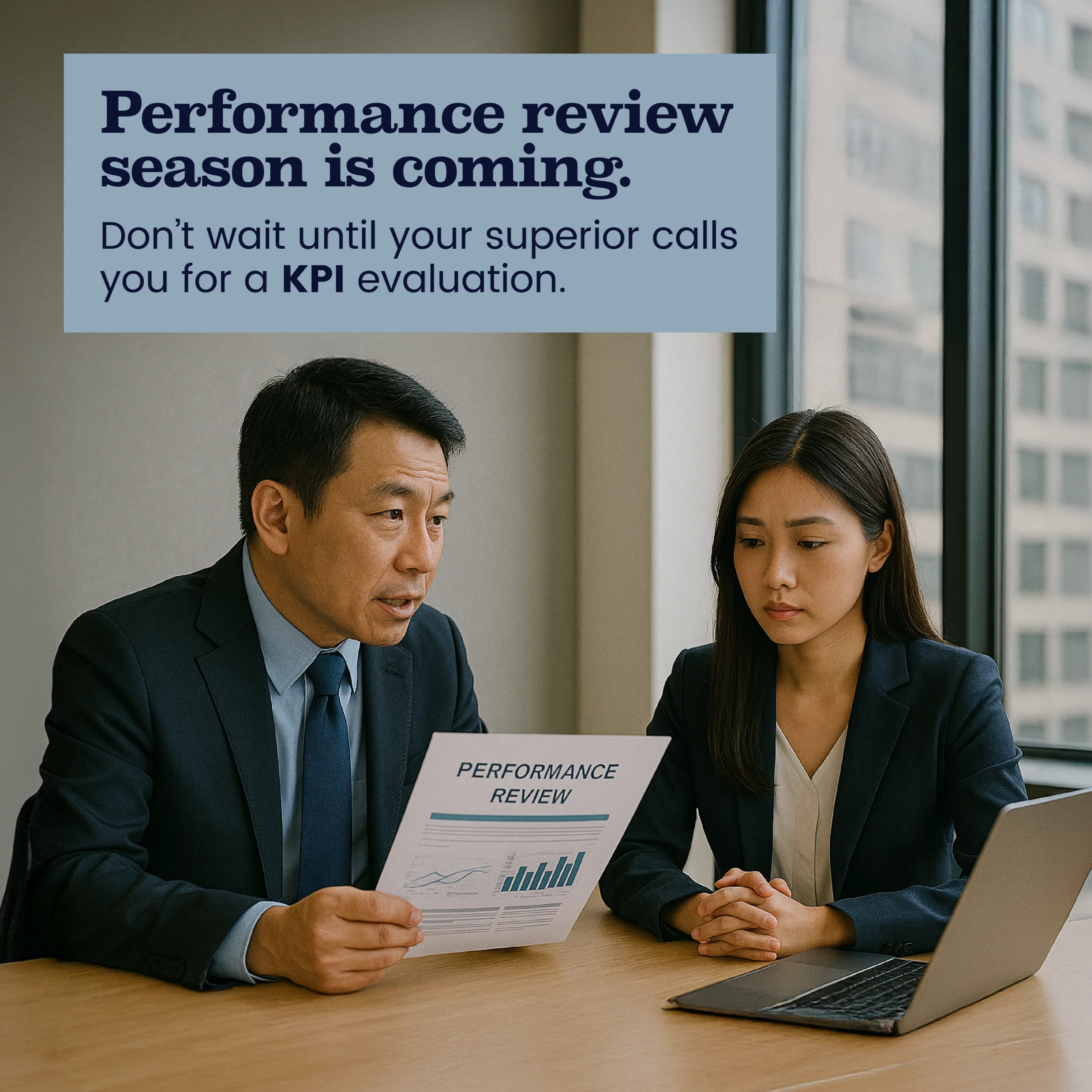Every year, performance evaluations bring a mix of anticipation and dread. If you have not fulfilled your training KPI by then, that meeting can turn into a test of your relevance, dedication, and strategic thinking. Rather than scramble at the last minute, treat your training KPI as an opportunity to showcase growth and value.
Why Your Evaluation Meeting Is Dangerous When You’re Unprepared
- Attendance Certificates Don’t Tell the Whole Story
Managers often go beyond “Did you attend?” They want to know, “What changed because of that training?” If your improvement is invisible, your KPI is judged weak.
- Learning Fades Fast Without Reinforcement
Research shows retention plummets within months if new skills aren’t applied or reinforced. Without evidence of sustained change, what you once learned disappears from memory.
- Organizations Expect Outcomes, Not Just Inputs
Today, many companies measure how training supports outcomes like productivity, error reduction, or employee engagement. That means your training KPI must connect to business impact.
- A Weak KPI Narrative Undermines Your Credibility
When your evaluation meeting arrives, you don’t want to stumble through vague explanations. If you lack specific examples of change, leadership may question your commitment to growth.
What Research and Best Practices Say About Training KPIs
- External resources point out that many organizations still rely on metrics like attendance or completion rates alone. These are useful, but insufficient to prove impact. (Voxy: 17 Training and Development Metrics and KPIs)
- Continu’s guide shows eight powerful KPIs that go deeper than attendance—like behavior change, time to competence, and training ROI. (Continu: 8 Powerful KPIs to Measure Training and Development)
- In Malaysia, emotional intelligence has been shown to have a strong, significant relationship with job performance across sectors. That means soft skills development matters not only in evaluations but in everyday contribution. (“Emotional intelligence on job performance: A study on Malaysian employees”)
- A study in the Malaysian public sector confirmed that emotional intelligence influences organizational performance. Public administrators with higher emotional intelligence yielded better outcomes. (“Impact of Emotional Intelligence on Organisational Performance: An Analysis in the Malaysian Public Sector”)
These studies remind us that training KPIs tied to behavior, emotional skills, and real performance carry much more weight than those tied only to hours.
The KPIs That Will Save You When You Walk into That Meeting
Here are the types of training KPIs that hold up under scrutiny:
| KPI Type | Why It Matters | What to Document |
| Time to Competency | Shows how quickly you reached the required level | Tests before & after, manager review |
| Behavior Change | Reveals new or improved work habits | Specific before/after examples, peer feedback |
| Business Metrics | Links training to tangible outcomes | Error rate drop, productivity gain, customer feedback |
| Knowledge Retention | Shows long-term learning | Follow-up quizzes, assessments 30/60/90 days later |
| Stakeholder Feedback | Confirms others perceive your growth | Testimonials from manager, peers, or team |
| Relevance to Role | Ensures the training supports your actual tasks | Map training content to work tasks |
Also consider using a training effectiveness score, which compares performance before and after training to measure improvement. (Umbrex: Training Effectiveness Score)
What You Can Do Today to Rescue Your KPI Story
- Clarify KPI expectations now
Revisit your training objectives. Ask management what results they want to see.
- Collect proof of impact immediately
Gather reports, metrics, or examples where training led to specific changes.
- Seek feedback proactively
Ask managers and colleagues: “What changes have you seen, if any?” Use that in your KPI narrative.
- Map upcoming trainings to gaps
Choose training that addresses weakest areas. Even a late start shows initiative.
- Log everything in a KPI folder
Maintain a well-organized file with dates, content, performance data. When your meeting comes, your narrative has weight.
Walking into your KPI evaluation meeting without evidence is like going into a debate without preparation. You might survive, but you won’t win.
A fulfilled training KPI is not just about getting a good rating. It is about proving that you evolve, that you care, and that you can deliver value beyond expectations.
Your goal should be walking in confidently, not nervously. Start building that KPI evidence today—and don’t let your evaluation be the moment you panic.









